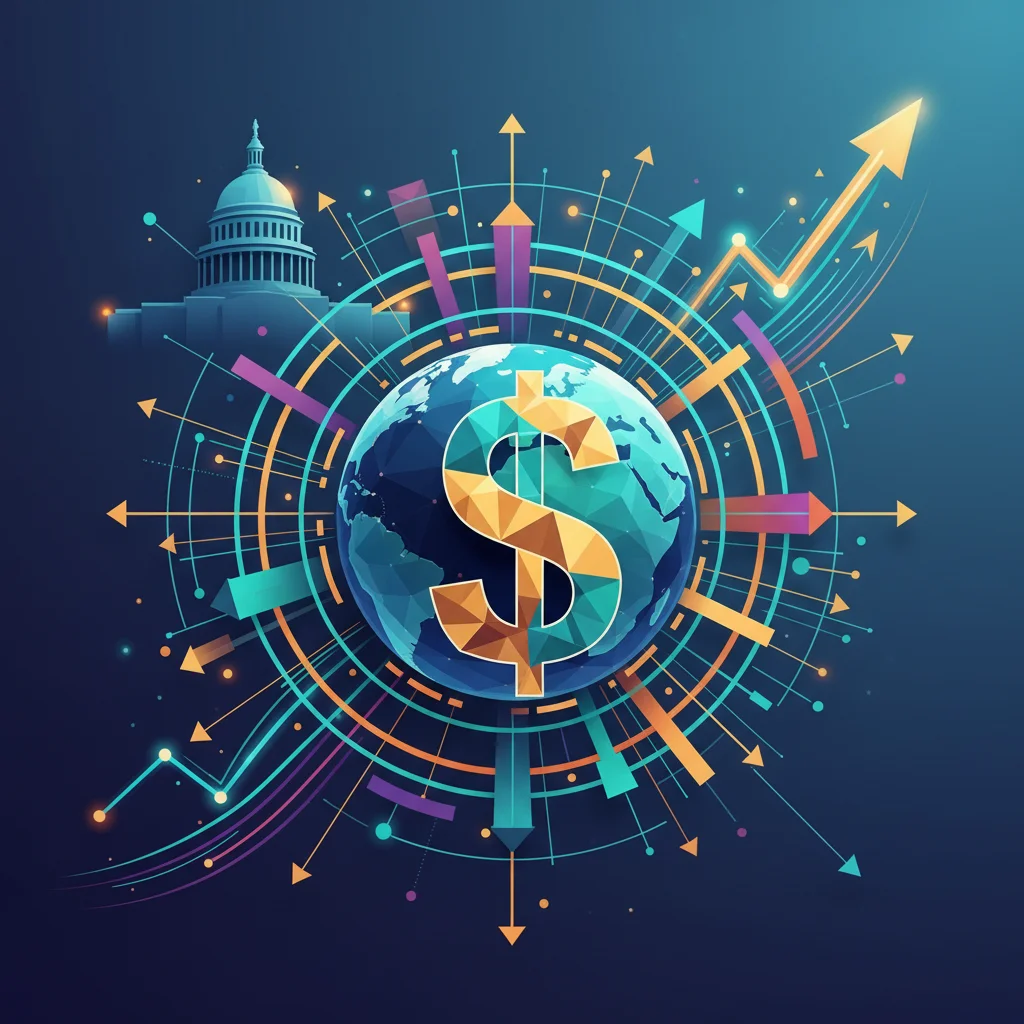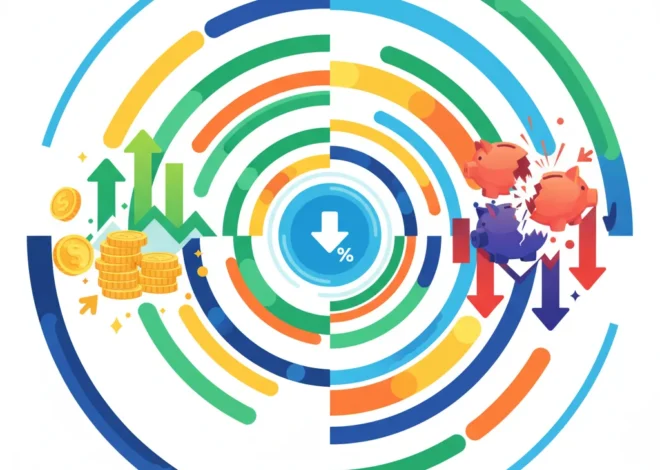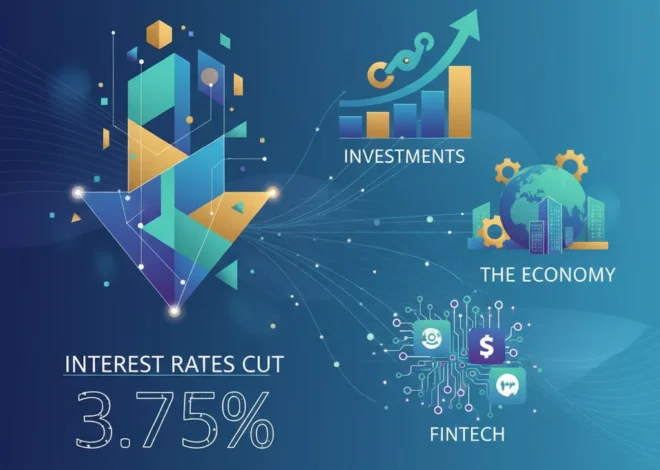
The Dollar’s Next Chapter: Why Washington is Pushing for a More Dollarized World
The U.S. dollar is more than just a currency; it’s a cornerstone of the global financial system. For decades, it has been the undisputed king of international trade, banking, and foreign exchange reserves. Now, in a subtle but significant policy exploration, Washington is looking to double down. According to a report from the Financial Times, U.S. officials are actively examining strategies to encourage more nations to adopt the greenback as their primary currency—a process known as dollarization.
This isn’t just a minor tweak in foreign policy. It’s a strategic move with profound implications for the global economy, international relations, and the future of investing. At a time when narratives of de-dollarization and challenges from digital currencies are gaining traction, this push represents a powerful reassertion of American financial influence. But what does it truly mean for a country to “dollarize”? Why is the U.S. promoting this now, and what are the potential consequences for businesses, investors, and the very fabric of global finance?
In this deep dive, we will unpack the complex world of dollarization, explore the geopolitical chess match behind this policy push, and analyze its impact on everything from the stock market to the burgeoning world of fintech.
The Enduring Hegemony of the Dollar
To understand why expanding the dollar’s reach is a priority, we first need to appreciate its current dominance. The U.S. dollar’s role is a legacy of the 1944 Bretton Woods Agreement, which established it as the world’s primary reserve currency, pegged to gold. While the gold standard was abandoned in 1971, the dollar’s supremacy has persisted, granting the United States what former French Finance Minister Valéry Giscard d’Estaing famously called an “exorbitant privilege.”
This privilege means the U.S. can borrow cheaply, as there is a constant global demand for dollar-denominated assets like Treasury bonds. It also insulates the U.S. from many foreign exchange risks. Today, the dollar’s influence is staggering:
- It accounts for nearly 60% of all global foreign exchange reserves, according to the International Monetary Fund (IMF).
- It is on one side of almost 90% of all global foreign exchange trades, as reported by the Bank for International Settlements.
- The vast majority of international trade, especially in key commodities like oil, is invoiced and settled in dollars.
This deep-rooted dominance forms the foundation of the modern global banking and trading system. A push for wider dollarization is, therefore, a strategy to reinforce and expand this already formidable financial empire.
Understanding Dollarization: A Double-Edged Sword
Dollarization occurs when a country formally or informally adopts the U.S. dollar as its legal tender, partially or entirely replacing its domestic currency. This can range from allowing citizens to hold dollar bank accounts alongside the local currency (unofficial dollarization) to completely abolishing the local currency and using the dollar for all transactions (full official dollarization), as seen in countries like Panama, Ecuador, and El Salvador.
For a nation struggling with economic instability, the appeal is clear. Adopting the dollar can be a powerful tool to crush hyperinflation, instill policy discipline, and lower transaction costs, thereby attracting foreign investment. By outsourcing its monetary policy to the U.S. Federal Reserve, a country can import credibility and stability overnight.
However, this stability comes at a significant cost. Here is a breakdown of the primary arguments for and against dollarization from a country’s perspective:
| Pros of Dollarization | Cons of Dollarization |
|---|---|
| Inflation Control: Eliminates the ability of the local central bank to print money recklessly, directly combating hyperinflation. | Loss of Monetary Sovereignty: The country gives up control of its own monetary policy, including interest rates and money supply. |
| Economic Credibility: Signals a strong commitment to stability, which can lower borrowing costs and attract foreign direct investment. | No Lender of Last Resort: The local central bank cannot print money to bail out failing domestic banks, increasing systemic risk. |
| Lower Transaction Costs: Simplifies international trade and finance by eliminating currency conversion fees and exchange rate risk with the U.S. | Loss of Seigniorage: The government forfeits the profit it makes from printing its own currency. |
| Trade and Investment Integration: Deepens economic ties with the U.S. and other dollar-based economies. | Inability to Devalue: The country cannot devalue its currency to make exports more competitive during an economic downturn. |
The U.S. motivation for encouraging this, as hinted at in the initial reports, is multifaceted. It strengthens geopolitical alliances, creates a captive market for U.S. dollars (and by extension, U.S. debt), and serves as a powerful counter-narrative to the growing de-dollarization movement.
The ROI of Rest: Why Strategic Downtime is the Best Investment You'll Make This Autumn
The De-Dollarization Countercurrent
No discussion of the dollar’s expansion is complete without examining the forces pushing in the opposite direction. De-dollarization—the global trend of reducing reliance on the U.S. dollar—is no longer a fringe concept in economics. It’s a stated policy goal for a growing number of nations.
The motivations are clear:
- Geopolitical Leverage: The U.S. has increasingly “weaponized” the dollar through sanctions, cutting off adversaries from the global financial system. This has prompted countries like Russia, China, and Iran to actively seek non-dollar alternatives for trade and reserves.
- Economic Independence: Nations want to be insulated from the whims of U.S. monetary policy. When the Federal Reserve raises interest rates, it can cause capital flight and financial instability in emerging markets—a phenomenon they have little control over.
- Rise of Alternatives: China’s growing economic might has made the yuan a more viable, albeit still limited, alternative for trade, particularly within Asia and among BRICS nations.
This movement creates a complex backdrop for the U.S. push. While Washington seeks to bring more countries into its financial orbit, powerful global players are actively building parallel systems to operate outside of it.
Fintech and Blockchain: The Wild Cards in the Currency Game
The battle for currency supremacy is no longer confined to central banks and governments. The rise of financial technology has introduced disruptive new players and paradigms that could fundamentally reshape the landscape.
On one hand, fintech can accelerate dollarization. Dollar-backed stablecoins like USDC and Tether are a form of “private-sector dollarization.” In countries with unstable currencies, citizens are flocking to these digital dollars on the blockchain as a stable store of value and a means of exchange, bypassing their own failing financial systems. This represents a grassroots adoption of the dollar, powered by technology, that operates outside of formal government agreements.
On the other hand, the core ethos of decentralized finance (DeFi) and cryptocurrencies like Bitcoin is to create a financial system independent of any single nation-state or central authority. Blockchain technology provides the infrastructure for a potential future where value can be transferred globally without ever touching the traditional banking system or a government-issued currency. While still nascent and volatile, this technological movement represents a long-term ideological and architectural challenge to the top-down, state-controlled model of currency that the dollar currently dominates.
The White House Balance Sheet: Deconstructing the Economics of Presidential Aesthetics
What This Means for Investors and Global Business
For the average investor and business leader, these high-level geopolitical shifts have tangible consequences. A renewed push for dollarization could have several key impacts on investing and corporate strategy.
Below is a summary of the potential implications for different stakeholders:
| Stakeholder | Potential Implications of Wider Dollarization |
|---|---|
| U.S. Investors | Reduced currency risk when investing in dollarized emerging markets. Potentially sustained low borrowing costs and a strong dollar. |
| International Investors | Increased correlation between U.S. and dollarized economies. The U.S. stock market and Fed policy will have an even greater direct impact on these markets. |
| Businesses in Dollarized Nations | Stable environment for planning and pricing, but less flexibility to adjust to economic shocks. Increased competition from U.S. firms. |
| Multinational Corporations | Simplified cross-border trading and financial operations in more regions, but heightened exposure to U.S. political and economic risks. |
For those managing global portfolios, this trend reinforces the need for sophisticated risk management. While dollarization can reduce currency volatility in specific markets, it concentrates systemic risk around the health of the U.S. economy and the decisions of the Federal Reserve. Diversification not just across asset classes, but across currency regimes, will become increasingly critical.
Kodak's Second Shot: Can a "Blue-Collar CEO" Reboot a Fallen Giant?
Conclusion: The Future is Unwritten
Washington’s exploration of wider dollar adoption is more than an obscure policy debate; it is a pivotal move in the grand narrative of 21st-century global finance. It is a reassertion of an established power structure in the face of tectonic shifts from geopolitical rivals and technological innovators.
The outcome is far from certain. The world is simultaneously witnessing a powerful gravitational pull towards the stability of the dollar and a determined push for a more multipolar financial system. The future of money will likely not be a single, monolithic entity but a complex ecosystem where the U.S. dollar, rival state currencies, and decentralized digital assets all compete for influence. For investors, policymakers, and citizens alike, understanding the forces driving this new chapter for the dollar is essential to navigating the economic landscape of tomorrow.


